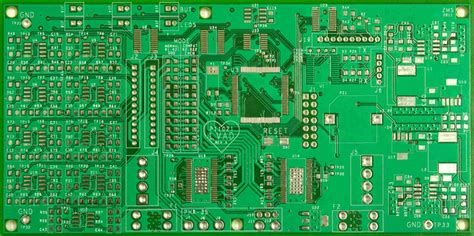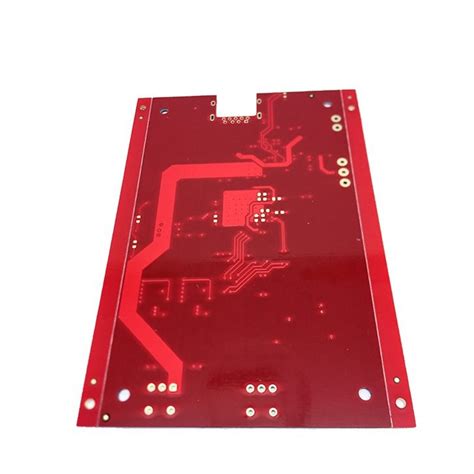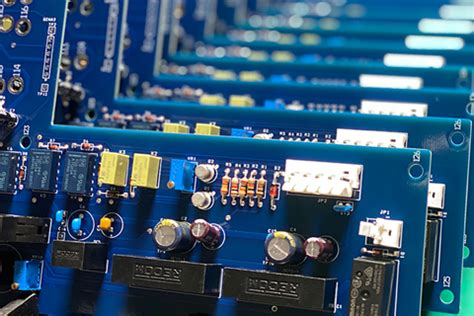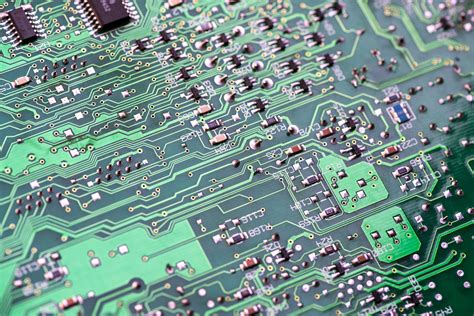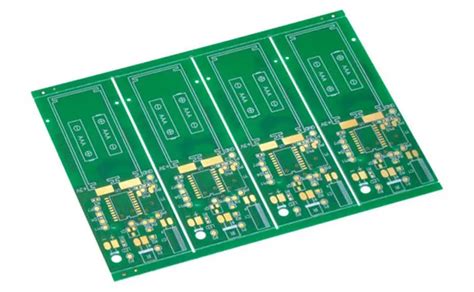Mastering Bare Printed Circuit Board Manufacturing for Innovation
Key Takeaways
Understanding bare printed circuit board manufacturing is fundamental for anyone in the electronics industry. As you delve into the world of PCB manufacturing, it becomes clear that mastering innovative techniques and employing advanced technology are crucial for success. The flexibility in design is a game-changer, allowing you to customize your PCB layout to meet specific product requirements effectively. Moreover, collaborating with reputable PCB manufacturing companies can significantly influence the pcb manufacturing cost and ensure high quality in production. Emphasizing the importance of rigorous testing and quality assurance in your pcb manufacturing business will aid in enhancing product reliability. By embracing these key aspects, you are not only paving the way for innovation but also setting a strong foundation for incorporating bare PCBs into modern electronic technologies.
Introduction to Bare Printed Circuit Board Manufacturing
In the world of electronics, understanding bare printed circuit board (PCB) manufacturing is essential for fostering innovation. These foundational components are integral to the functioning of modern electronic devices, serving as the backbone for electrical connectivity and support. When you delve into PCB manufacturing, it’s crucial to recognize the diverse processes and techniques involved, from initial design concepts to material selection. The cost associated with this PCB manufacturing business can vary significantly based on factors like materials, complexity, and volume, making it important to conduct thorough research when collaborating with different PCB manufacturing companies.
The role of bare PCBs transcends mere support structures; they are a testament to innovative thinking and technological advancement in electronics. By mastering the intricacies of PCB production, you can better adapt your designs while keeping in mind that flexibility is key in this ever-evolving industry.
“Innovation thrives on understanding the tools at your disposal; bare PCBs are one such essential tool that empowers designers and engineers alike.”
In your journey through bare PCB manufacturing, consider how you can leverage innovative techniques to enhance your designs while maintaining cost efficiency. Embracing these concepts will not only elevate your products but also position you strategically in a competitive market focused on growth and advancement in technology. For more insights on effective PCB solutions, feel free to visit Andwin PCB.

Innovative Techniques in Bare PCB Production
In today’s fast-paced electronic landscape, innovative techniques in bare pcb manufacturing are crucial for staying competitive. These techniques focus on enhancing the efficiency and precision of the production process while minimizing the overall pcb manufacturing cost. For example, advancements in computer-aided design (CAD) and manufacturing technologies allow for increased automation, which not only speeds up production but also reduces human errors. Additionally, pcb manufacturing companies are now exploring the integration of advanced materials that bolster the reliability and performance of their products. Techniques such as laser etching and high-density interconnect (HDI) technology maximize space efficiency on PCBs while enabling intricate designs that meet modern electronic requirements.
As you delve deeper into bare pcb manufacturing business, you will find that techniques like additive manufacturing and flexible circuit technologies are reshaping traditional practices. These approaches afford you greater options for customization and design flexibility, which are essential attributes when catering to specific market needs. Moreover, fostering a culture of innovation within production teams can lead to breakthrough solutions that address common challenges faced in these processes. By adopting such innovative techniques, your enterprise can significantly enhance its competitiveness in the dynamic landscape of electronics, paving the way for novel applications and products worldwide.
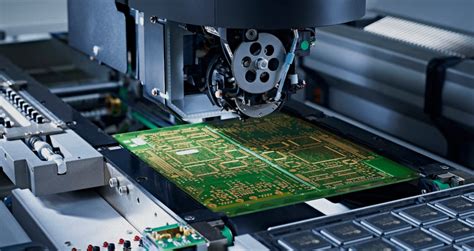
Materials Used in Bare Printed Circuit Boards
In the realm of pcb manufacturing, the choice of materials for bare printed circuit boards (PCBs) is pivotal. The most common substrate material is FR-4, a composite of woven fiberglass cloth and epoxy resin, known for its excellent electrical insulation and thermal stability. This material plays a significant role in the pcb manufacturing cost, as it balances performance with affordability. Other materials such as CEM-1 and CEM-3 are also utilized due to their lower costs and decent performance for less demanding applications.
When it comes to conductive materials, copper is the standard choice for traces and pads, owing to its superb conductivity. However, more advanced applications may require specialized materials like silver or gold plating to enhance conductivity and prevent oxidation. Additionally, certain high-frequency applications may use Teflon-based substrates that reduce signal loss and maintain signal integrity.
An overview of common materials used in bare PCB manufacturing can be illustrated in the following table:
| Material Type | Properties | Typical Uses | Manufacturing Companies |
|---|---|---|---|
| FR-4 | Good dielectric properties, low cost | Consumer electronics | Various large-scale PCB manufacturers |
| CEM-1 | Moderate performance, low-cost option | Basic electronic devices | Mid-sized pcb manufacturing companies |
| Copper | High conductivity | All circuit traces | All major PCB manufacturers |
| Teflon | Excellent high-frequency performance | RF and microwave circuits | Specialized PCB manufacturing firms |
By carefully selecting these materials based on application needs, you can ensure that your bare PCBs will not only meet performance standards but will also remain cost-effective in your overall pcb manufacturing business strategy. Understanding the implications of these material choices allows you to navigate the landscape of PCB production with confidence, targeting optimal results while managing costs effectively.
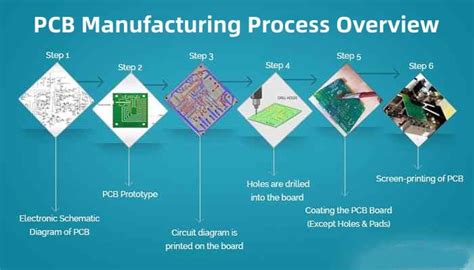
Design Flexibility and Customization in PCB Manufacturing
In the realm of pcb manufacturing, design flexibility and customization are pivotal in meeting the diverse needs of various industries. As you navigate through the offerings of different pcb manufacturing companies, you’ll quickly realize that the ability to adapt designs plays a crucial role in gaining competitive advantages. The integration of innovative design tools and software allows you to specify unique features such as size, layer configuration, and signal routing – all tailored to optimize performance for your specific electronic applications. This customization not only enhances functionality but also can significantly impact pcb manufacturing cost. By choosing designs that align with your project requirements, you can often streamline production processes, leading to greater efficiency and potentially lower costs. Furthermore, a successful pcb manufacturing business thrives on its capacity to provide you with bespoke solutions that cater precisely to your project needs. Whether you’re developing high-speed communications equipment or sophisticated medical devices, embracing design flexibility empowers you to bring innovative ideas to fruition while navigating the intricacies of modern electronics effectively. This iterative approach not only fosters innovation but also ensures that you remain ahead in a rapidly evolving technological landscape.
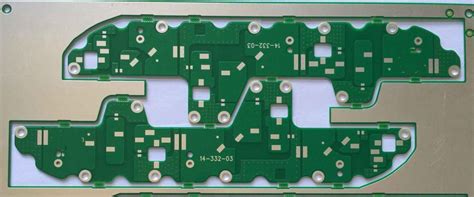
Testing and Quality Assurance for Bare PCBs
In the realm of pcb manufacturing, testing and quality assurance play a pivotal role in ensuring that the end products meet the highest standards of performance and reliability. As you delve into the intricacies of bare printed circuit board manufacturing, understanding the various methodologies used in testing can significantly influence your outcomes. Various techniques such as Automated Optical Inspection (AOI), X-ray inspection, and electrical testing are crucial in identifying defects at different stages of production. Emphasizing a systematic approach not only reduces the pcb manufacturing cost but also enhances overall product quality, making it imperative for pcb manufacturing companies to adopt rigorous quality control measures. By implementing these strategies, you ensure that each PCB can withstand both functional requirements and environmental conditions, thus reducing risks associated with potential failures. Furthermore, as you engage with multiple pcb manufacturing businesses, it becomes evident that maintaining high-quality standards not only builds customer trust but also fosters innovation within the pcb manufacturing landscape. The careful integration of testing protocols guarantees that your bare PCBs are ready to drive advancements in modern electronic technologies while supporting ongoing efforts to push the boundaries of what’s possible in circuit design and functionality.
The Role of Bare PCBs in Modern Electronic Technologies
Bare printed circuit boards (PCBs) serve as the backbone of modern electronics, enabling the intricate connections and functionalities we rely on daily. Their significance in the PCB manufacturing process cannot be overstated, as they provide the essential framework for both passive and active electronic components. In your pcb manufacturing business, understanding this role is critical, as the demand for innovative designs and reliable performance continues to grow. The versatility of bare PCBs allows for customization that caters to a wide range of applications, from consumer electronics to sophisticated industrial systems. As you explore partnerships with reputable pcb manufacturing companies, you’ll find that investing in quality bare PCBs can lead to reduced pcb manufacturing costs while enhancing product reliability and longevity. Furthermore, as technologies advance, so does the importance of having a solid foundation provided by bare PCBs—these components not only facilitate electric pathways but also influence factors like thermal management and signal integrity. Therefore, by mastering the nuances of bare printed circuit board manufacturing, you position yourself at the forefront of innovation in this ever-evolving landscape.
Challenges and Solutions in Bare PCB Manufacturing
When it comes to pcb manufacturing, you may encounter a variety of challenges that can impact the overall efficiency and profitability of your pcb manufacturing business. These hurdles often include issues such as material defects, design complexities, and the need for rigorous quality assurance. To overcome these challenges, it is crucial to adopt innovative techniques and advanced technologies. For instance, partnering with reputable pcb manufacturing companies can significantly reduce the pcb manufacturing cost by streamlining processes and optimizing resource allocation. Moreover, implementing automated testing solutions ensures that every unit adheres to industry standards, thereby minimizing errors and enhancing reliability. Embracing flexible design practices also allows for quick adjustments to respond to evolving market demands, which ultimately positions you favorably in the competitive landscape. As you navigate these obstacles, focusing on solutions tailored specifically for your needs will not only enhance production quality but also provide a pathway toward innovation in bare printed circuit boards.
Future Trends in Bare Printed Circuit Board Technology
As technology continues to advance, so too does the landscape of bare printed circuit board (PCB) manufacturing. In the coming years, you can expect to see significant innovations that reshape the pcb manufacturing business. One major trend is the increased use of advanced materials that enhance performance while reducing weight and thickness. These materials contribute to decreased pcb manufacturing costs, enabling companies to produce more efficient and cost-effective solutions.
Another trend involves the integration of smart technologies within the design and production process. Automation and artificial intelligence are becoming more prevalent in pcb manufacturing companies, streamlining operations and allowing for greater precision. This will not only enhance product quality but also reduce turnaround times, further revolutionizing how you approach PCB projects.
In addition, there is a growing emphasis on sustainability. With an increase in environmental awareness, manufacturers are focusing on eco-friendly processes and materials, which could reshape your expectations regarding sourcing and production. The transition towards greener practices in bare PCB manufacturing is not just about compliance; it’s also a chance for your business to gain competitive advantages in a rapidly changing market.
Flexibility in design will be another key focus area as you look toward future innovations. The demand for customization is rising, leading to developments that enable easier adaptation of bare PCBs for various applications. By embracing these trends, you position yourself advantageously in a field that is evolving swiftly, ensuring that your offerings remain relevant and competitive amid technological advancements.
Conclusion
In the rapidly evolving landscape of technology, understanding the intricacies of bare printed circuit board (PCB) manufacturing is vital for anyone involved in electronic design and production. As you delve into the world of pcb manufacturing, you will discover that the process not only emphasizes efficiency but also highlights the importance of innovative design techniques. By collaborating with reputable pcb manufacturing companies, you can leverage advanced methodologies that enhance your product’s performance while managing pcb manufacturing costs effectively. It’s essential to consider customization options available through these companies, ensuring that your specific needs are met without compromising on quality. Furthermore, being aware of industry challenges and how to address them can strengthen your pcb manufacturing business and position you for success in the competitive market. Embracing these insights will empower you to position your products at the forefront of technological innovation, thereby driving progress in electronic product development.
FAQs
What are bare printed circuit boards (PCBs)?
Bare printed circuit boards are unpopulated boards that provide the foundation for electronic circuits. They consist of conductive pathways, pads, and mounting points, enabling the connection and support of components in electronic devices.
Why is PCB manufacturing important?
PCB manufacturing is crucial for the production of high-quality electronic devices. It allows engineers to design and customize boards according to specific requirements, thereby enhancing performance and functionality across various applications.
How do I select a reliable PCB manufacturing company?
When choosing a pcb manufacturing company, look for experience, advanced technology, quality control measures, and customer reviews. A reputable company should be able to provide a range of services and demonstrate flexibility in meeting your unique design needs.
What factors influence PCB manufacturing cost?
The pcb manufacturing cost can vary based on several factors, including materials used, board complexity, layer count, and production volume. Understanding these elements can help you effectively manage your budget while ensuring product quality.
Can I customize my bare PCBs?
Yes! One of the benefits of bare PCB production is the design flexibility it offers. You can alter layouts and specifications to suit your specific application needs through various techniques in pcb manufacturing business, ensuring optimal performance.

